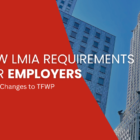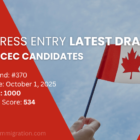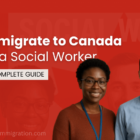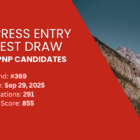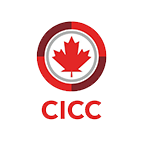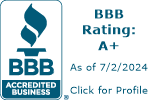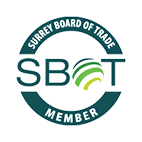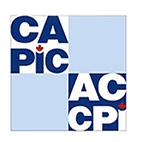“Why does the list of documents for a Spouse Visa in Canada feel endless?”
Because every document tells part of your story. Spousal Sponsorship isn’t just about ticking boxes. It’s about proving the authenticity of your relationship.
Most spousal sponsorship refusals don’t happen because documents are missing. They happen because the narrative has gaps officers can’t ignore. They are trained to detect inconsistencies in timelines, communication patterns, and intent.
If you want to sponsor your spouse for a Canada PR Visa from outside Canada, you need to fill out all the forms. You also have to submit several documents. In this article, we will explain how to prepare for the application.
Please note that we will refer to you, a Canadian permanent resident or Canadian citizen, as the “sponsor” in this guide. We will also refer to your non-Canadian spouse who you wish to sponsor and currently residing outside Canada as the “principal applicant” in this guide.
Why Choose Outland Over Inland Spousal Sponsorship?
Outland spousal sponsorship is the process for Canadian citizens and permanent residents to sponsor a spouse or common-law partner who lives outside Canada.
It is handled by visa offices abroad, allowing your partner to continue their life while the application is being processed.
Permanent residents must be living in Canada to sponsor, while Canadian citizens can sponsor from abroad if they prove a genuine intent to return.
Two Main Advantages of Outland Spousal Sponsorship
I often tell clients that understanding these advantages isn’t just about speed. It’s about strategy.
1. You Can Appeal After Refusal
If an Outland application is refused, you have 30 days to file an appeal. This safety net doesn’t apply to inland applications. Inland refusals don’t have IAD appeal rights; the usual option is to seek judicial review in the Federal Court.
2. Faster Processing
As of publication, IRCC’s tool shows Outland applications currently take between 9 and 12 months, depending on the visa office.
Inland applications are taking 22 months.
Even with inland applications, the work permits you’re waiting for can only be applied for after you receive an Acknowledgment of Receipt (AOR), which can take months.
Current processing times for open work permits are 7 to 8 months. This means you could be waiting nearly a year without work authorization.
Important note: Always check the IRCC processing-time tool for current estimates.
Anyone applying for Canada’s outland spousal sponsorship must submit various forms and documents outlined in the IMM 5533 document checklist. This checklist contains many checkboxes which list mandatory documents and optional supporting ones. The sponsor and the principal applicant must check each checkbox that applies to them and submit the corresponding document listed.
Forms the Sponsor and the Principal Applicant Must Fill Out Together
The sponsor and the principal applicant must fill out both these forms together as they require information from each one.
- Sponsorship Evaluation and Relationship Questionnaire (IMM 5532): It includes multiple questions about the sponsor and the principal applicant’s relationship.
- Use of Representative (IMM 5476): Required to use a representative, such as an immigration lawyer or an unpaid helper, to complete their application on their behalf.
Forms the Sponsor Must Fill Out
The sponsor must fill out these forms themselves:
- Application to Sponsor, Sponsorship Agreement, and Undertaking (IMM 1344): Expresses intent to sponsor the spouse for Canadian permanent residency.
Forms the Principal Applicant Must Fill Out
The principal applicant must fill out these forms themselves:
- Generic Application Form for Canada (IMM 0008): declares the intent to be sponsored under the Spousal Sponsorship program.
- Supplementary Information Your Travels (IMM 5562): This is a country-specific form that people from certain countries, such as India, must fill out. The principal must detail their travel history in the last ten years in this application.
- Additional Family Information (IMM 5406): This form asks for information about the principal applicant’s immediate family, even if they aren’t coming to Canada with them. Immediate family includes parents and siblings.
- Schedule A Background/Declaration (IMM 5669): This form asks the principal applicant about their education, employment, and travel history for the last ten years.

What Does the Outland Sponsorship Process Actually Look Like?
Every outland spousal sponsorship follows the same basic structure:
Eligibility Assessment
Eligibility confirms you meet the basic requirements: the sponsor must be a Canadian citizen or permanent resident, be at least 18 years old, and not be receiving social assistance for reasons other than disability. The relationship must be legally recognized, either through marriage or at least one year of cohabitation for common-law partnerships.
Application Submission
The application consists of two parts: the sponsorship application and the permanent residence application. You submit both at the same time, but they are assessed separately. The sponsorship part checks if you’re eligible and financially able. The permanent residence part reviews whether your partner is admissible to Canada and if the relationship is genuine.
Processing
Processing times average 9 to 12 months, but that’s just an average. Some files move faster; others take longer. Officers can request additional documents, schedule interviews, or request clarification at any time. How you respond to those requests matters as much as your initial submission.
Decision
The decision comes down to one question: has this application shown clearly that this relationship is real and meets all rules?
What Are Immigration Officers Really Looking For?
Most couples gather hundreds of photos, print countless chat logs, and collect letters from everyone who’s ever seen them together. They’re documenting affection while officers evaluate coherence.
I’ve handled dozens of spousal sponsorship applications. The gap between what couples think matters and what officers evaluate is where most applications fail.
The most common inconsistencies are not the major ones. They are small, everyday details that don’t match up. One partner might say they met in person, while the other states they met online.
Both could be true in context, but they are inconsistent on paper. Or you submit dozens of photos but forget to explain why you spent months apart. That silence speaks louder than words.
Officers aren’t viewing your application as a romantic story. They’re checking if your life timelines match, if your communication seems natural, and if your plans show a real partnership. They’re trained to spot patterns that don’t fit.
When the story feels emotionally convincing but isn’t backed by facts, it raises doubt. And once doubt enters an officer’s mind, every detail is looked at more closely through that perspective.
Your relationship story should read like two voices telling one truth.

Connect with Licensed Spouse Visa Experts
How Can You Prove Your Intention to Return to Canada?
If you’re a Canadian citizen living abroad, you encounter a requirement that causes more applications to be denied than almost anything else: demonstrating intent to return. Only Canadian citizens can sponsor from outside Canada. Permanent residents must be residing in Canada to sponsor their partner.
However, if you’re sponsoring from abroad, you need to show a genuine intention to move back once your partner is granted permanent residence.
Intent is not a promise. It’s a plan.
Most people think saying “I’ll find a job when I get there” is enough. It’s not. IRCC wants to see concrete, on-the-ground planning.
Case Study: A Canadian husband sponsoring his Indian wife from Dubai provides a clear example. The wife, a registered nurse, started the credentialing process to get licensed in British Columbia, a process she didn’t need for her Dubai job. They researched schools, neighbourhoods, and contacted private schools about admission timelines. The husband formally notified his multinational employer of transferring to the Canadian office. They planned to stay with his parents initially, then buy their own home nearby. This showed concrete evidence of preparation, not just intention.

Apply for Canada Spouse Visa with ELAAR
Why Do Spousal Sponsorship Applications Get Refused?
Refusals rarely happen because a document was missing.
They happen because the story wasn’t clear.
When refusal cases come to me, the gaps are usually obvious like missing explanations, timelines that don’t make sense, details swept aside because the process was treated as ‘just paperwork.’
Every time, I find myself asking: why would anyone take such a risk with something that can change their family, their future, their life?
Sometimes it’s a small mistake: an unchecked box, a weak relationship letter, ignoring cultural differences that actually need to be explained.
Other times, it’s more significant: not understanding how immigration officers interpret the file, or relying on unauthorized agents who don’t know Canadian immigration law.
The pattern is painfully consistent where applications get refused because they were treated like forms, not advocacy.
Many cases come from couples who thought it was just about gathering documents and filling out forms. Some used “helpers” back home who don’t understand the process (but charge money anyway).
The consequences are real: if an officer isn’t convinced your marriage is genuine, your application can be refused, and in cases of false statements or material omissions, you could face a five-year ban for misrepresentation. Even a visitor visa can be denied, leaving couples separated for years.
Common Reasons IRCC Refuses Spousal Sponsorship:
- Doubt about the genuineness of the relationship: This is the #1 reason. Weak or inconsistent evidence, gaps in your timeline, cultural differences that aren’t explained, shaky details—all of these raise red flags.
- Sponsor ineligibility: Age, residency, criminal record, unresolved sponsorship debts, or bankruptcy can make a sponsor ineligible leads to automatic refusal.
- Misrepresentation: Any false statement, withheld information, or forged documents means not just refusal, but a five-year ban from Canada.
- Application errors: Missing forms or signatures, outdated paperwork, or not responding to IRCC requests. Sometimes it’s a small technical mistake that costs everything.
- Financial or medical/criminal inadmissibility: If the sponsor is unable to support the spouse, or if the applicant has medical/criminal issues, IRCC will refuse the application.
The real issue isn’t in what you submit. It’s in what you fail to explain.
Looking to Apply for a Canada Spouse Visa?
Get Expert Assistance from Licensed RCIC Professionals.
What Makes a Strong Spousal Sponsorship Application?
I always tell my clients: if you are true partners, you may not notice many small things you do daily. These actions show that your relationship is real. You don’t have to rely on any simple checklist.
For example: You talk and text every day. You exchange gifts on special occasions. You transfer money between accounts, showing financial interdependence. You tag each other on social media. You have joint accounts or list each other as beneficiaries on investments. You start preparing for your partner’s arrival.
The IRCC document checklist is only the bare minimum. A strong application goes much further, based on understanding what officers actually assess.
Every couple’s situation is unique. What applies to one rarely applies to another. Each case has its own rhythm, its own logic, its own emotional context.
Proof of Relationship Documents Canada
The sponsor and principal applicant must also provide various “proof of relationship” documents and those mentioned above. These “proof of relationship” documents show IRCC that the sponsor and principal applicant’s relationship is genuine.
These documents include the following:
Proof of Contact
Since the sponsor and principal applicant are currently residing in different countries, they must provide IRCC proof that they are in contact with each other. This includes:
- Letters
- Emails
- Text messages
- Conversations on social media
If the principal applicant has visited Canada before to meet with the sponsor, they must provide airline coupons, boarding passes, and copies of their passport showing their entry stamp into Canada.
Proof of Past Cohabitation
If the sponsor and principal applicant previously lived together, they must show proof of their cohabitation through the following:
- Proof they jointly owned residential property
- Rental agreements containing both their names
- Joint vehicle insurance documents
Proof of Children
If the sponsor and principal applicant have had children together, they must provide a copy of each child’s birth certificate.
Other Proof of Relationship
The sponsor and primary applicant must provide a minimum of two of the following documents to prove their relationship is genuine.
- Documents listing the sponsor and primary applicant as married. This includes insurance or employment benefit documents with both their names listed.
- Evidence of financial support of shared expenses. For example, the sponsor can provide bank statements showing them regularly transferring money to the principal applicant’s account.
- Statements from family and friends who attended the marriage ceremony.
- Photos of the marriage ceremony, honeymoon, and other photos showing the couple with their family and friends following their marriage.
How to Prove Genuineness of Relationship in Canada Spouse Visa?

Complete Your Spouse Visa Application
Why Must You Hire Licensed Professionals?
As you can see, the sponsor and principal applicant must provide numerous forms and documents with the Spousal Sponsorship program application. I’ve seen couples breaking down, crying to be reunited with their families. In some cases, it’s not only a spouse but a dependent child who was born while the father is in Canada and the mother and child remain in their home country.
The role of professional guidance isn’t just to prepare documents. It’s to understand the story behind them, to represent it in a way that feels coherent, complete, and credible. You can fill the forms yourself, but you can’t see your own blind spots.
If you’re uncertain about any part of your application, that uncertainty will show in the file.
If you need assistance with your application and want to ensure your documents are complete, don’t hesitate to contact Elaar Immigration.
Our experienced Regulated Canadian Immigration Consultants have helped numerous applicants apply for the Spousal Sponsorship program and understand what documents IRCC checks for. We can help you to reunite with your partner as a permanent resident in Canada.






